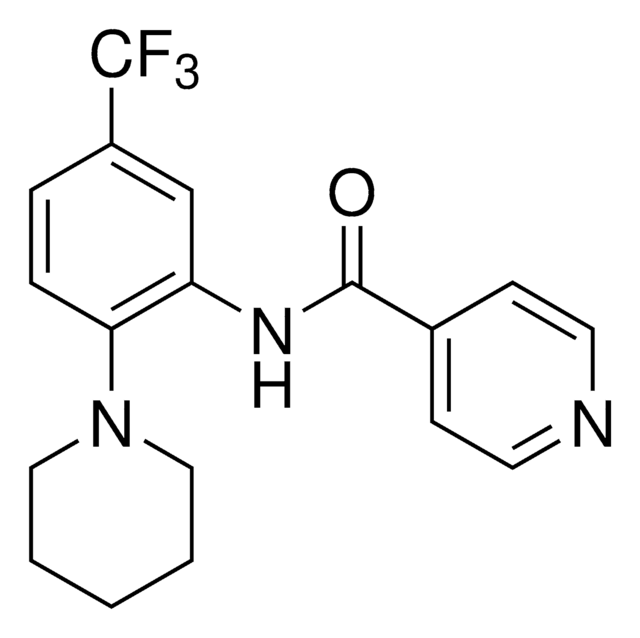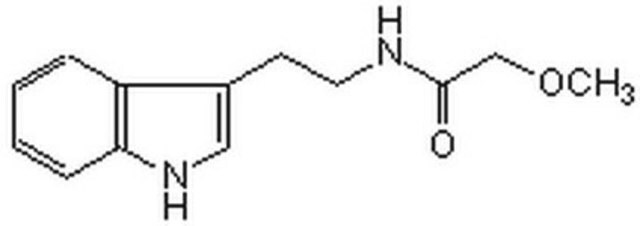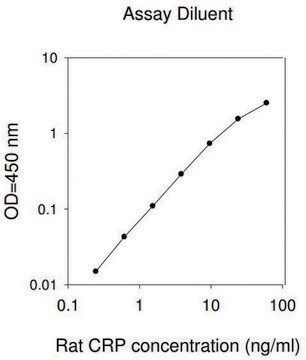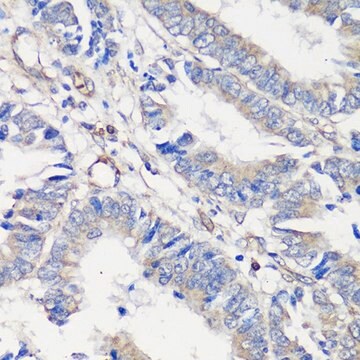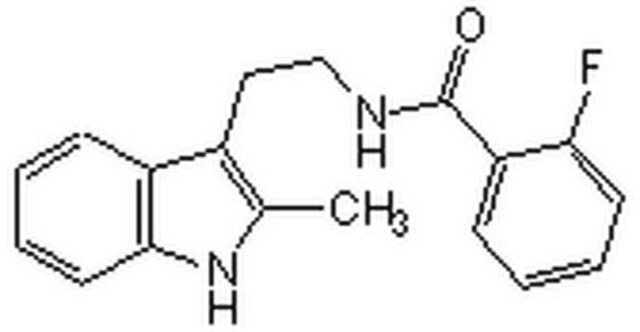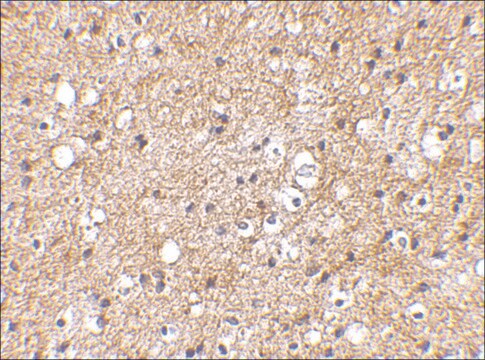PZ0115
CP-31398 dihydrochloride hydrate
≥98% (HPLC)
Synonyme(s) :
N′-[2-[2-(4-Methoxyphenyl)ethenyl]-4-quinazolinyl]-N,N-dimethyl-1,3-propanediamine dihydrochloride hydrate
About This Item
Produits recommandés
Niveau de qualité
Essai
≥98% (HPLC)
Conditions de stockage
desiccated
Couleur
yellow
Solubilité
H2O: ≥20 mg/mL
Température de stockage
2-8°C
Chaîne SMILES
O.Cl.Cl.COc1ccc(cc1)\C=C\c2nc(NCCCN(C)C)c3ccccc3n2
InChI
1S/C22H26N4O.2ClH.H2O/c1-26(2)16-6-15-23-22-19-7-4-5-8-20(19)24-21(25-22)14-11-17-9-12-18(27-3)13-10-17;;;/h4-5,7-14H,6,15-16H2,1-3H3,(H,23,24,25);2*1H;1H2/b14-11+;;;
Clé InChI
JXIVIAMOMIONKY-UWCBQFGESA-N
Informations sur le gène
human ... TP53(7157)
mouse ... TP53(22059)
rat ... TP53(24842)
Application
- to evaluate its effects on the upregulation of miRNA in human neuroblastoma cells
- to study its effects on arsenic trioxide (ATO) stabilization of p53 folding
- to study its effects on regulation of miR-34 in PC12 cells
Actions biochimiques/physiologiques
Caractéristiques et avantages
Mention d'avertissement
Warning
Mentions de danger
Conseils de prudence
Classification des risques
Acute Tox. 4 Oral - Aquatic Chronic 4 - Eye Irrit. 2 - Skin Irrit. 2
Code de la classe de stockage
11 - Combustible Solids
Classe de danger pour l'eau (WGK)
WGK 3
Point d'éclair (°F)
Not applicable
Point d'éclair (°C)
Not applicable
Faites votre choix parmi les versions les plus récentes :
Certificats d'analyse (COA)
Vous ne trouvez pas la bonne version ?
Si vous avez besoin d'une version particulière, vous pouvez rechercher un certificat spécifique par le numéro de lot.
Déjà en possession de ce produit ?
Retrouvez la documentation relative aux produits que vous avez récemment achetés dans la Bibliothèque de documents.
Articles
We present an article about how proliferating cells require the biosynthesis of structural components for biomass production and for genomic replication.
Contenu apparenté
Apoptosis, or programmed cell death (PCD), is a selective process for the removal of unnecessary, infected or transformed cells in various biological systems. As it plays a role in the homeostasis of multicellular organisms, apoptosis is tightly regulated through two principal pathways by a number of regulatory and effector molecules.
n proliferating cells, the cell cycle consists of four phases. Gap 1 (G1) is the interval between mitosis and DNA replication that is characterized by cell growth. Replication of DNA occurs during the synthesis (S) phase, which is followed by a second gap phase (G2) during which growth and preparation for cell division occurs. Together, these three stages comprise the interphase phase of the cell cycle. Interphase is followed by the mitotic (M) phase.
Notre équipe de scientifiques dispose d'une expérience dans tous les secteurs de la recherche, notamment en sciences de la vie, science des matériaux, synthèse chimique, chromatographie, analyse et dans de nombreux autres domaines..
Contacter notre Service technique![[Pyr1]-Apelin-13 trifluoroacetate salt ≥96% (HPLC)](/deepweb/assets/sigmaaldrich/product/images/391/809/a864cd5a-3260-42cf-93ae-cb4754f4e4ad/640/a864cd5a-3260-42cf-93ae-cb4754f4e4ad.jpg)

